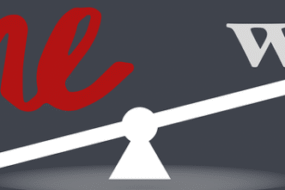Overview of Ikea Company
A SWOT analysis for IKEA should start with a brief summary on the company’s background.
Accordingly, IKEA is a multinational that deals with the manufacture and sale of furniture, home-ware, and food products.
Although the company currently has its headquarters in Delft, Netherlands, it was founded in Sweden in 1943 by Ingvar Kamprad.
IKEA is reputed for modernist designs for different types of furniture and home appliances with an interior design work that is usually considered as eco-friendly and simple.
The company is also known for lower prices compared to its competitors.
Further, the company has operations in about 52 countries with more than 430 IKEA stores.
SWOT Analysis for Ikea
Just like an IKEA PESTLE analysis, a SWOT analysis for IKEA would be an important tool for devising an effective strategy for the company.
As illustrated in the case of SWOT analysis for Tesla and SWOT analysis for General Motors, the SWOT analysis for IKEA would entail examining the strengths, weaknesses, opportunities, and threats IKEA faces.
Per se, the SWOT analysis for IKEA would be as elaborated below.
|
SWOT Analysis for IKEA |
|
| Strengths
1. Affordable Products 2. Strong Brand Name 3. Effective Supply Chain 4. Product Diversification 5.Effective Research and Development
|
Weaknesses
1. Poor Public Image 2. Low Quality Products 3. Poor Differentiation 4. Poor Presence in Key Regions
|
| Opportunities
1. The Food Business 2. E-Commerce 3. Emerging Markets 4. Eco-friendly Products
|
Threats
1. Intense Competition 2. Increasing Disposable Income 3. Potential Lawsuits 4. Global Economic Crisis |
Strengths
IKEA strategic analysis should effectively evaluate the company’s strengths. This is important in underlining the areas the company should leverage on in its strategies and growth approaches.
Such strengths include:
1. Affordable Products
Affordable products is one of the biggest selling points for IKEA. The company’s approach that emphasizes offering products at the lowest possible prices has resulted into loyal customers.
In the past, the company has successfully managed to adopt approaches such as the use of innovative and cheap materials to keep the prices of its products comparatively lower.
Note that IKEA has been able to keep the prices low without necessarily affecting the appearance of its products.
2. Strong Brand Name
Brand name cannot be overlooked when carrying out an IKEA business analysis. The company boosts one of the strongest brand names in its industry and the general market.
IKEA’s furniture and home-ware products are some of the most known across the globe, with the brand enjoying more than 600 million customers each year.
Further, the company has a brand presence in different regions considering the fact that it has operations in more than 50 countries.
3. An Effective Supply Chain
A reliable supply chain integration is another strength to consider in the SWOT analysis for IKEA. In this, the company has managed to build healthy and strong relationships with its suppliers.
In IKEA strategic analysis, the role of an effective supply chain in ensuring that the company has a reliable supply of raw materials and at low prices cannot be overlooked.
In addition, the company usually procures raw material from local suppliers to cut down on transport costs.
Further, its IWAY code of conduct for suppliers ensures highest possible raw materials quality.
4. Product Diversification
When it comes to IKEA business analysis, product diversification is certainly at the core of the company’s market strategy.
Note that IKEA boosts an extensive product portfolio when compared to its competitors. Besides, furniture and home-ware, the company has ventured into the foods industry and the housing sector.
Apart from its highly diversified furniture and home-ware products, the company has ventured into other industries, which makes it adapt more effectively to market changes.
5. Effective Research and Development
Research and development is also central to SWOT analysis for IKEA. This is in recognition of the company’s ability to leverage on innovation in product design and costs management.
Similarly, the company has been able to rely on market research to effectively understand the needs of its customers.
IKEA’s innovativeness in product design has been core to its market dominance.
Weaknesses
Weakness are also critical when conducting a SWOT analysis for IKEA. They are central to the company’s strategic analysis.
In this, you are required to look at the negative factors likely to affect the company.
These factors include:
1. Low Quality Products
Without doubt, the quality of products sold is vital SWOT analysis for IKEA. It has been observed that the company has consistently compromised quality in favor of low prices.
Some surveys on IKEA competitor’s analysis indicate that the average customer at IKEA is generally unsatisfied with the company’s product quality compared to products from the competitors.
The low product quality results into high numbers of product returns, which has a negative impact on customer satisfaction and company performance.
2. Poor Public Image
IKEA strategic analysis should consider the implications of the negative publicity the company has garnered in the past.
Note that the company has suffered poor public image due to issues such as adverse employee relations, poor marketing approaches, and issues with their food products (horse meat incident).
The persistence of such negative public image has the potential to impair brand reputation and consequently damage customer loyalty.
3. Low Differentiation
Product differentiation cannot be left out of IKEA business analysis. Note that the company has been accused of little or no product differentiation.
Accordingly, in an effort to realize costs reduction and mass production, the company has often been forced to adopt standardization in its product manufacturing.
The standardized products deprives the company the market share associated with customers seeking customized or unique products.
4. Poor Presence in Key Regions
Regional and global market penetration is also important in SWOT analysis for IKEA. It has been observed that the company has not been able to exert its dominance is some regions.
The company relies chiefly on Europe and North America as its key markets. Per se, it has failed to effectively extend its operations to emerging markets in regions such as Asia and South America.
Note that the overreliance on the two market regions (Europe and North America) exposes the company to high market risks and denies it potential income.
Opportunities
The SWOT analysis for IKEA should also examine the various opportunities the company could exploit to enhance its competitiveness in the market.
Some of these opportunities are as explored below.
1. Food Business
The food business offers a major opportunity for IKEA. Accordingly, the company could maximize on the rise of demand for healthy foods among global consumers.
IKEA can focus on the sale of fresh groceries to match the shift in demand among a population that has become more conscious about healthy feeding habits particularly in developed countries.
The company boosts extensive retail experience and infrastructure deriving from their food and home-ware business that could be useful in the grocery business.
2. E-Commerce
E-commerce presents another major opportunity for IKEA. Accordingly, the company should seek to take advantage of the rise of online purchasing behavior among customers across the globe.
Rightly, the global society has over the years turned to online purchasing practices as a convenient marketplace. This is reflected in the high number of traffic registered on IKEA’s website.
IKEA can therefore develop strategies aimed at enhancing their online customer experience as well as online sales.
3. Emerging Markets
When conducting a SWOT analysis for IKEA, you should seek to examine the place of emerging markets in the company’s growth strategy.
This is in realization of the growth potential for retail business in different countries and regions. The company could seek to expand its operations in such markets as Malaysia, Brazil, Indonesia, Mexico, etc.
Emerging markets would offer an opportunity for increased revenue generation.
4. Eco-Friendly Products
As well, IKEA could focus on its “green” business approach as a key strategy towards the enhancement of its growth and profitability.
This opportunity lies in the rise of “ethical purchasing behavior” among customers. The approach would entail focusing on products that are environmentally friendly.
The new products would help attract a new client segment.
Threats
Threats would be the last area of evaluation when conducting a SWOT analysis for IKEA. The area should focus on the factors likely to impair the company’s business strategy.
These factors include:
1. Intense Competition
IKEA competitor’s analysis should examine the existence or rise of companies in IKEA’s core area of business.
Accordingly, the entrance of low price retailers like Tesco and Walmart into the furniture and home-ware industry threatens IKEA’s market dominance.
2. Increasing Disposable Income
As well, the rise in the disposable income among customers in key IKEA’s market segments poses a serious threat to the company.
This is in recognition of the fact that employee salaries and wages have experienced a gradual increase over the time in Europe, North America, and Asian countries like China and Japan.
The increase in disposable income is making the customers to gradually shift from low price products that are usually characterized by low quality to premium and high quality products.
3. Potential Lawsuits
As it has been evident in the past, IKEA stands the risk of numerous lawsuits and litigation processes due to issues related to employee management and product quality.
Issues such as employee discrimination and accidents associated with its products are likely to end up into lengthy, damaging, and costly lawsuits.
4. Global Economic Crisis
Lastly, IKEA faces the threat of a declining global economy amidst the COVID-19 pandemic. The impacts of the pandemic on the economy are likely to be long-term.
Notably, even before the pandemic, the economy in some regions had started to stagnate.









